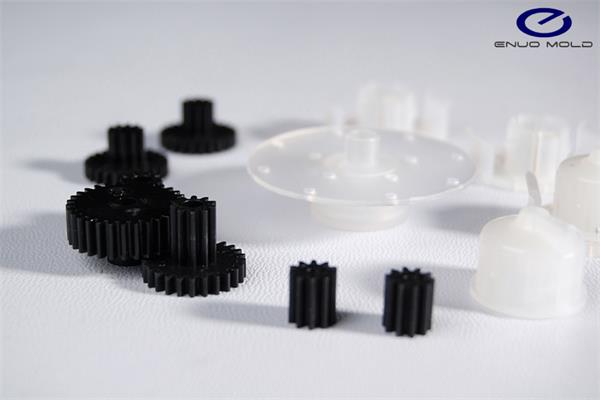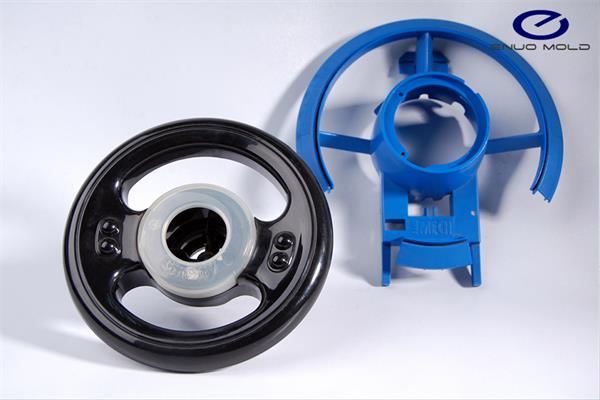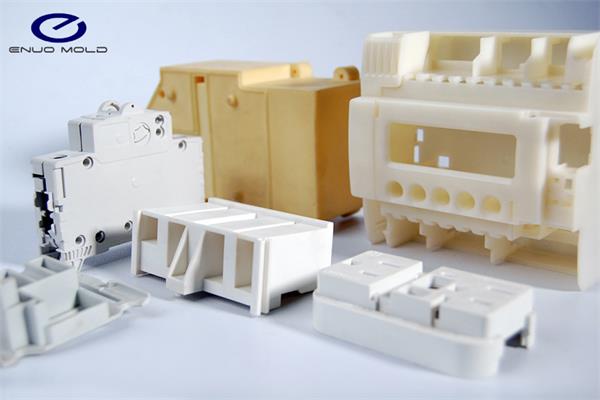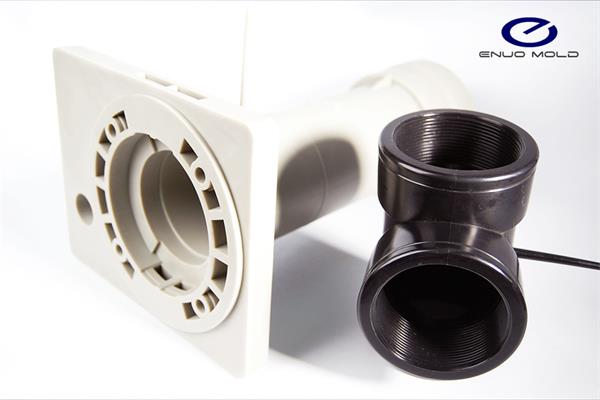1. Relative density/proportion
The relative density refers to the volume of the chemical substance company.
The ratio refers to the ratio of the relative density of a chemical substance to the density of water.
2. Heat of vaporization and coefficient of compression
The heat of vaporization is the volume occupied by each gram of plastic (cm³/g), and the compressibility is the ratio of the volume or heat of vaporization between the electrostatic powder and the plastic part (its value always exceeds 1). They can all be used to clarify the size of the film discharge chamber. The large value of the standard value stipulates that the volume of the discharge chamber should be large. At the same time, it also shows that the electrostatic powder has a lot of air pumping, the exhaust pipe is difficult, the molding time is long, and the production efficiency is low. The opposite is true if the heat of vaporization is small, and it is good for pressing and limiting.

3. Water absorption
Water absorption refers to the level of plastic digestion and absorption of water. The measurement method is to first dry the sample and weigh it. After soaking into the water for 24 or two days, remove it and weigh it again, and calculate the percentage added to the amount, which is the water absorption. sex.
4. Activeness
The plastic’s ability to fill a cavity under temperature and working pressure is called activity. It is the main parameter of a key processing technology that is considered when stamping dies. Active new easy to form too much flashing, filling cavity is not dense, plastic parts are loosely distributed, epoxy resin and fillers are gathered separately, easy to stick to the mold, mold ejection and finishing are difficult, hard bottoming is too early and other disadvantages. However, if the activity is small, the filling is short, it is not easy to form, and the forming pressure is too large. Therefore, the activity of using plastics is consistent with plastic parts regulations, forming processes and forming standards.
5. Hard bottoming characteristics
The polyurethane elastomer is transformed into a ductile viscous state under heating and stress during the whole forming process. As the activity expands, the cavity is filled, and at the same time, aldol condensation occurs. The crosslinking density continues to increase, and the activity is flexible. It is a fully automatic forming machine that lowers and gradually dries the melted material. When stamping molds, the speed of hard bottoming is faster, and the materials with short persistent theme activities should be careful to facilitate the feeding, loading and unloading of inserts, and selecting effective forming standards and actual operations to avoid too early hard warping or hard bottoming Shortage, resulting in poor molding of plastic parts.

6. Moisture and Volatile Organic Compounds
All kinds of plastics have different levels of moisture and volatile organic compounds. When too much, the activity expands, it is easy to overflow, the persistence time is long, reduces expansion, and it is easy to produce wave patterns, expansion and contraction and other disadvantages and harms. Mechanical and electrical engineering functions of plastic parts. However, when the plastic is too simple, it will also cause poor activity and difficult formation. Therefore, different plastics should be heated as required. It is simple to heat the materials with strong water absorption, especially in the humid season, even if the heated materials should be avoided. Moisture absorption
7. Heat sensitivity
Heat-sensitive plastic refers to some plastics that are more flexible to heat. When they encounter heat at high temperatures, the time is longer or the cross section of the feed opening is too small. When the actual effect of cutting is great, the increase in mold temperature is likely to cause discoloration, depolymerization, and splitting. Plastics with this type of characteristics are called heat-sensitive plastics.
8. Water sensitivity
Some plastics (such as polycarbonate) even have a small amount of water, but they will split under high temperature and high pressure. This kind of function is called water sensitivity, and it is simple to heat it in advance.
9. Water absorption
Plastic guessed that because there are a variety of additives that make them have different levels of affinity for water, plastics can be roughly divided into two types: moisture absorption, moisture adhesion, and non-hygroscopicity and difficult to adhere to water. It is guessed that the moisture content is controlled within the allowable range, otherwise the moisture becomes vapor under high temperature and high pressure or the actual effect of hydrolysis reaction occurs, which will cause the epoxy resin to bubble, reduce its activity, and lack the appearance and mechanical and electrical engineering functions. good. Therefore, water-absorbent plastics are heated by appropriate heating methods and standards as required, and direct infrared induction is used to avoid re-absorption of moisture during application.

10. Breathability
Breathability refers to the vapor transmission function of plastic film or plastic board
11. Melt index value
The Melt Index (MI) is a standard value that indicates the activity of plastic materials during production and processing.
12. Tensile strength/crack elongation
Tensile strength refers to the amount of force required to stretch a plastic material to a certain level (such as yield limit or cracking point). It is generally marked by the total area of each enterprise. And the percentage of the length after pulling the length to the original length is the crack elongation.
13. Bumpy compressive strength
The compressive strength of bumps is the ability of plastics to resist bumps.
14. Impact compressive strength
Impact compressive strength refers to the kinetic energy that the plastic can bear when it is impacted by an external force.
15. Strength
The strength of general plastics is usually marked by two inspection methods, Rockwell hardness and Somo’s hardness. During the period, Shao’s A was often used to measure soft plastics, such as TPE and other polyurethane elastomers or vulcanized rubber, etc.; Shao’s D was used to measure harder plastics, such as general general-purpose plastics and some engineering plastics, and most of the high-function engineering Project plastics or harder engineering project plastics should be measured by Rockwell.
16. Heat distortion temperature
The heat distortion temperature is the temperature at which the plastic test piece is bumpy to a level under the working pressure and temperature.
17. Long-term high temperature resistance
Long-term high temperature resistance refers to the temperature resistance of plastic materials in long-term application.

18. Solvent-resistant character
The character of solvent-resistant drug refers to the modification of the weight, volume, tensile strength and elongation of the plastic material after being immersed in an organic solvent at a temperature for a period of time. A small genetic variation indicates an excellent low Dielectric change.
19. Aging resistance
Aging resistance refers to the resistance of plastic materials to the hazards of sunlight, heat, air, wind and rain in the outdoor natural environment, which cause drastic changes and deterioration.
20. Clarity
Clarity refers to the light transmittance of plastics in the visible light domain. Plastics can be divided into light transmittance, transparency and opacity according to the level of light passing.
21. smoothness
Smoothness refers to the level of mirror glass that is similar to that of chemical substances that can refract light. Good smoothness refers to the bright surface of chemical substances.
22. The insulating layer destroys the working voltage
The working voltage of insulating layer destruction is the working voltage that increases the high potential difference to the test piece to reach the destruction of the dielectric strength, divided by the value (Kv/mm) of the distance between the two electrodes (thickness of the test piece).
23. heat of fusion
The heat of fusion is also called the heat of melting and vaporization, which is the kinetic energy required for the composition or melting and crystallization of the crystalline polymer. This part of the kinetic energy is used to melt the crystalline structure of the polymer material. Therefore, when the crystalline polymer is processed by injection molding, it requires more kinetic energy to reach a specific melting temperature than when the amorphous polymer is processed by injection molding. No need for heat of melting and vaporization.
24. specific heat
The specific heat is the amount of heat needed when the temperature of the raw materials of the enterprise increases by 1 degree [J/kg.k].
25. thermal diffusivity
Thermal diffusivity refers to the rate at which the temperature is guessed to be transferred in the heating material. It is also called the heat transfer coefficient. Its value is the amount of heat (specific heat) and material digestion and absorption required when the temperature of the enterprise-quality raw materials rises by 1 degree. The rate of heat (heat transfer coefficient) is selected. Working pressure is less harmful to the thermal diffusion coefficient, but temperature is very harmful.
Post time: Jul-26-2021



